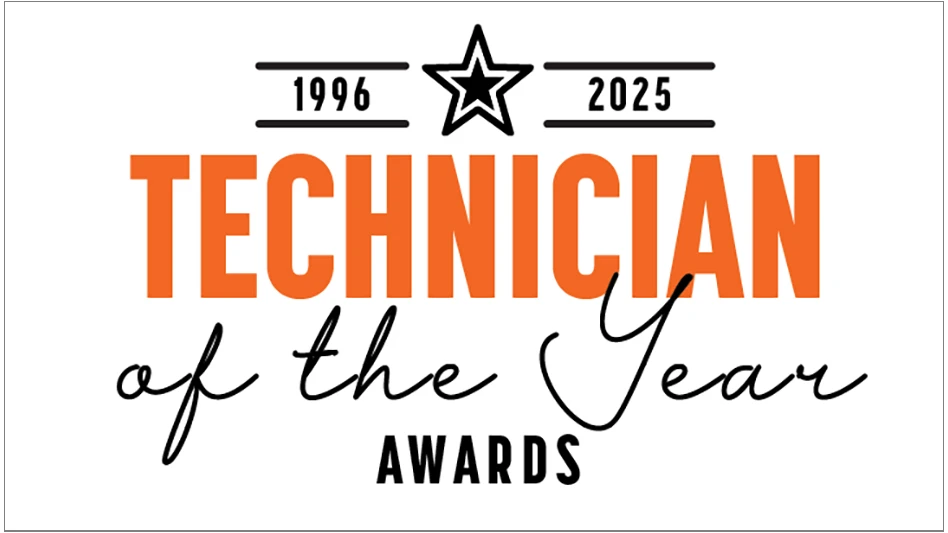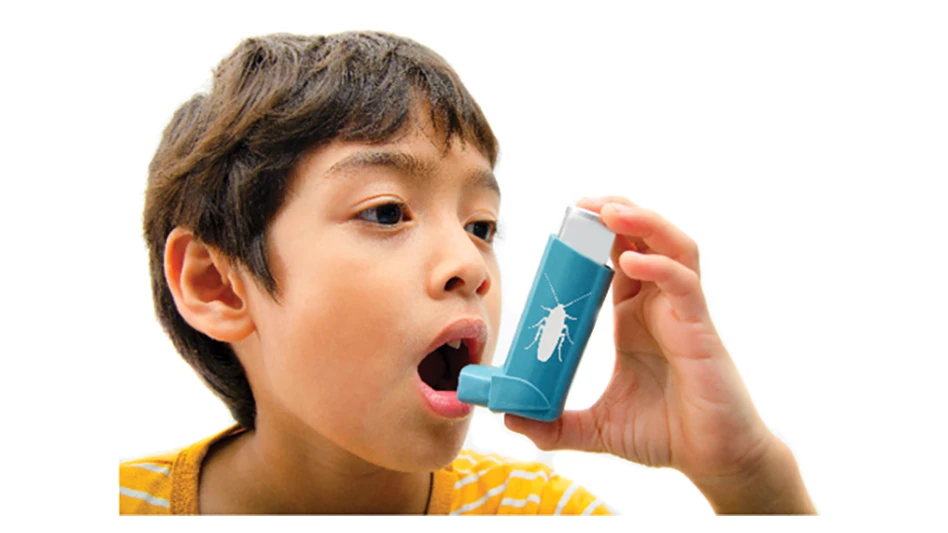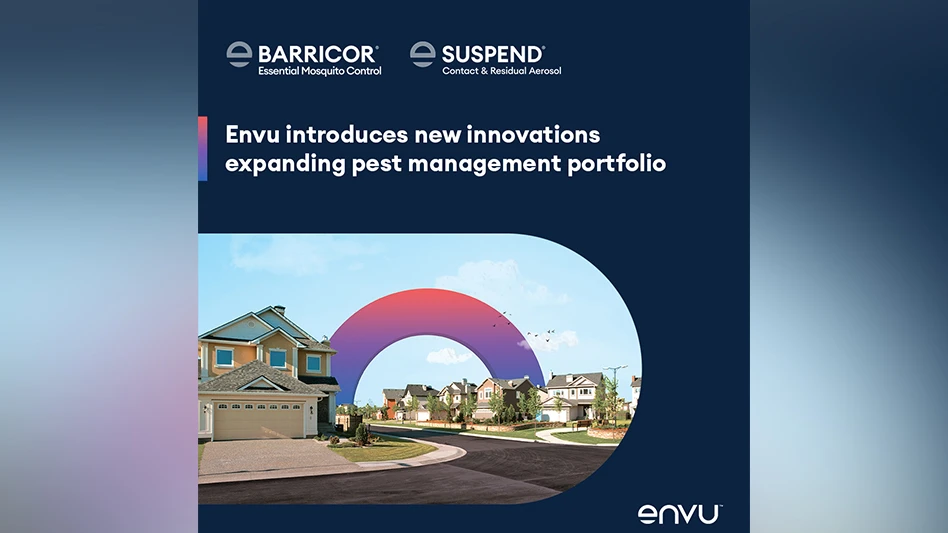Editor's Note: In this excerpt from the recently published 10th Edition of the Mallis Handbook of Pest Control, Contributing Editor Judy Black of The Steritech Group discusses the important role inspection and monitoring tools play in integrated pest management programs. For more information about the 10th Edition of the Mallis Handbook of Pest Control, visit www.mallishandbook.com.
Inspection and monitoring are described as the first steps in any integrated approach to pest management. Today, the pest management professional may spend as much or more time searching for, observing and collecting data on activity than in the actual application of pesticides. Even a detection device such as the relatively "low-tech" flashlight has had technological advancements over the last few years with the advent of light-emitting diodes (LEDs) and different battery types. A wide variety of "high tech" detection devices are now available. These technologies vary in their ease of use and cost, and should be evaluated based on their ability to increase efficiency and enhance profits.
Flashlights. Pest management is performed most frequently under less than optimal lighting conditions. Most pests live in small, dark areas that are not easily accessible. A reliable, high-performance flashlight is the most basic, and most important, tool a PMP must carry. Selecting a flashlight should be based on the needs of the PMP. Features to consider when making a flashlight selection include:
- Safety. Safety requirements for the facilities in which you work must be considered first. Flashlights are available to satisfy most, if not all, hazardous location requirements, although a significant cost is often associated with these safety features.
- Design Type: Flashlights are available as handheld units, head lamps and lantern/spot units. Handheld units are the most commonly used in our industry and come in many different styles and sizes, but are generally tubular in construction. Design features like a squared off head can be considered if the flashlight will be placed frequently on unlevel surfaces. Other design features to consider might include water resistance, ruggedness, size and weight.
- Light Source Type. Incandescent bulbs and light-emitting diodes (LEDs) are the two categories of light production available to us. Both choices have positives and negatives that should be weighed.
UV black light LED lights are available that can be used for finding scorpions or to search for rodent urine trails. The larger, expensive, long-wave UV lights using incandescent UV bulbs are better suited for finding rodent urine, but the flashlight-type LED UV models (e.g., the Arachnid™) cost one-fifth as much, and if used with yellow-lensed safety glasses, they can pick up rodent urine trails, especially for those with an experienced eye.
- Battery Type. Disposable and rechargeable batteries are the two major categories from which to select. Cost of battery replacement should be seriously considered when contemplating a flashlight purchase.
Inspection Mirror. Coupled with a quality flashlight, an extendable hand inspection mirror allows pest professionals to gain visual access to difficult harborage sites. Adapted from mirrors used by HVAC (heating, ventilating and air-conditioning) technicians and auto mechanics, these tools use small mirrors attached to an extendable handle. This tool allows pest professionals to see around and behind fixtures and corners where pests can escape normal inspection. A polished stainless steel mirror is preferred over a glass mirror in food facilities where broken glass is an issue.
Miscellaneous Tools. Insects may hide inside equipment, appliances, cabinets and other locations. Access to these areas usually requires some type of hand tool to remove screws, bolts or pins. A pest management professional can carry screwdrivers and/or wrenches in a tool pouch or specialized tool pocket on his or her belt. A multi-use tool, such as the Leatherman, has become popular with professionals as an all-in-one tool easily carried in a compact belt pouch.
Small screwdrivers, awls or ice picks can be used to probe wood when inspecting for wood-destroying organisms (WDO). An artist's palette knife or thin putty knife can be helpful in removing debris from cracks and crevices to inspect for pest activity or immature stages of the pest living in accumulated debris. A putty knife also can be useful when applying bulk paste baits. Needle-nose pliers are helpful in pulling carpets up from tack strips or peeling back cove base edges where pests may forage along baseboards.
Magnifiers. Given that most pests are ¼ inch (7 mm) or smaller, a magnifier of any kind is an essential tool. A 10X lens is the minimum magnification required but more is better. Many loupes go from 10X to 30X and a number of lighted mini-scopes are available. Small vials or pill bottles should be provided to collect specimens for positive identification or archiving, but Ziploc plastic bags work in a pinch. Plastic, not glass, vials should used in food or pharmaceutical plants.
 Flexible Scopes. To inspect inside hidden voids, a professional can use a flexible scope with fiber-optic technology. Two popular models in the industry are the ProVision, available from DutchGuard, and the Ridgid 25643 Sea Snake, available at many hardware stores. These devices require a hole [usually 1/4- to 3/8- inch (7 to 10 mm)] be drilled through the wall surface for access into the void. Some models may be attached to video equipment if permanent records of the conditions are required. Different features on the available models provide various pros and cons. The key factors to assess when purchasing a unit include closeness of focus, brightness of the light, ability to fit into tight spaces and wide angle view availability, as well as close up views.
Flexible Scopes. To inspect inside hidden voids, a professional can use a flexible scope with fiber-optic technology. Two popular models in the industry are the ProVision, available from DutchGuard, and the Ridgid 25643 Sea Snake, available at many hardware stores. These devices require a hole [usually 1/4- to 3/8- inch (7 to 10 mm)] be drilled through the wall surface for access into the void. Some models may be attached to video equipment if permanent records of the conditions are required. Different features on the available models provide various pros and cons. The key factors to assess when purchasing a unit include closeness of focus, brightness of the light, ability to fit into tight spaces and wide angle view availability, as well as close up views.
Listening Devices. Sound is an important detection tool for today's professional. Wood-destroying pests such as termites and carpenter ants can be detected from sound produced in harborage areas. A simple stethoscope can be purchased at hospital supply stores or larger drug stores. A stethoscope with both a flat diaphragm and listening cone is preferred. More elaborate electronic sound-detecting devices are available. These devices amplify the pest sounds making difficult detection easier.
CO2 Detection Devices. High CO2 levels may indicate the presence of termites. Devices are available that can help pest management professionals detect CO2 to help pinpoint problem areas.
Microwave Emitters. The Termatrac detection instrument (Protec USA) uses microwave technology to detect pest activity hidden below or behind the surface of timber, drywall or masonry surfaces with no effect on the building material or disruption of termite or ant activity. The microwaves detect movement of pests which is reflected back to the Termatrac unit, processed and displayed on an LCD screen.
Infrared Cameras. Infrared cameras can be helpful in detecting moisture issues within a wall or ceiling void. These devices also will identify potential hidden entry points by identifying changes in temperature, which may indicate structural defects. Infrared cameras do not detect the pests themselves, rather they detect conditions conducive to pest activity (e.g., high moisture). Infrared cameras are expensive and require specialized training in order to correctly interpret the information provided.
Moisture Meters. Some pests require certain moisture levels in the material or space they infest. A moisture meter can be used to confirm presence of hidden pests such as carpenter ants and/or termites by detecting high moisture in walls or wood where such insects prefer to nest or harbor.
Wood-boring beetles have specific requirements for the moisture content of the wood they infest. Professionals using moisture meters can use readings to help identify potentially infested wood. Such readings also may help to identify or exclude potentially infested items or areas. Moisture readings also help pest professionals advise clients on conditions of high moisture that may be conducive to ants or termites or wood vulnerable to decay fungi.
Early models of moisture meters were equipped with two probes or pins that had to be pressed into the surface to be tested. Today, "pin-less" models are available that will not damage surfaces and can be used on masonry and drywall surfaces.

Explore the November 2011 Issue
Check out more from this issue and find your next story to read.
Latest from Pest Control Technology
- How to Get Rid of Odorous House Ants
- Massey Services Promotes Herndon to Director of Sales for Multi-Family Division
- NPMA Announces First Recipients of NPMA PRO Certified Credential
- Pestmaster of the Hudson Valley Acquires Catskill Animal Damage Control
- Photo Slideshow: Ant Identification Tips
- Video: Top 10 PCT Photo Contest Finalists
- UF/IFAS Study Reveals Boats as Perfect Vessels for Global Termite Spread
- Pest Control Consultants (Iowa) Earns Pinnacle Performance Award






